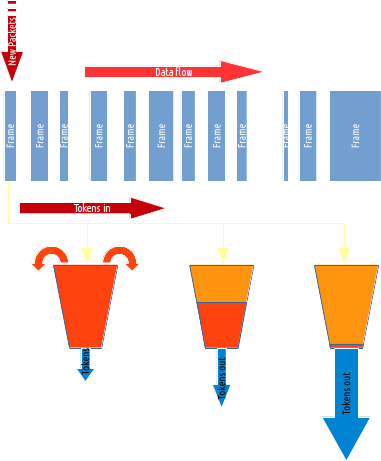MONI TokenWave
Inside the Packet receiver and analyser is the patent MONI TokenWave real-time state-machine drop prediction engine:

MONI TokenWave uses an advanced Token-Bucket array algorithm which meters buffer levels and predicts overflows in equipment.
This is the same token-bucket algorithm used in enterprise network switches and routers to shape and police traffic.
MONI TokenWave gives you the ability to see drop levels before hitting a downstream shaper or policer.
It gives you the ability to dry-run scenarios and predict issues with policing or shaping during development.
In the diagram above you can see that the traffic is beyond 1Mbps as the bucket overflows.
The graphing shows the maximum levels of the token buckets for the current minute so giving the values which will work for your application.
This is a shot of a real customer analysis:

Each vertical line is a 1 minute peak bucket fill.
Any lines which extend to the 1000kB indicate bucket overflow.
Here you can see around midnight the 5MBps bucket is filled so any shaper would have to be over 5MBytes,
but also the 10Mbps fills to around 100kB and even around 2am the 50MBps show filling so a policer would drop some packets.
Using the zoom here you can see the detail of that spike between 2am and 3am:

The "Analysis Download" would show the exact figures for bandwidth calibration.
A policer at 100MBps would be needed for drop free traffic, but also a shaper at 10MBps with a 150kB buffer would work for this.
You can see how this will predict this in advance, rather than taking the crap shoot of buying bandwidth and finding out it's inadequate.
Of course, this can be deployed into an existing network to find out if the bandwidth can be reduced, saving costs in wasted bandwidth.
We are not aware of any competing product implementing token-bucket based monitoring solution.
This drop prediction ability is unique to MONI.


